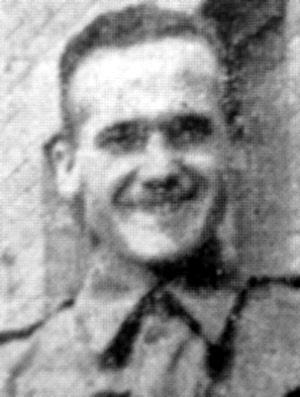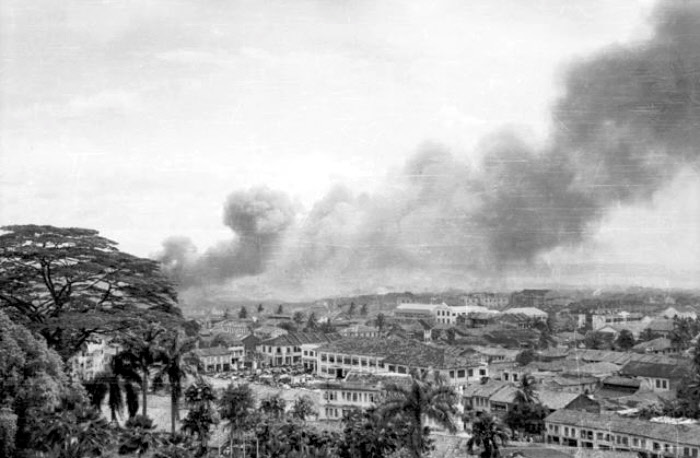
Prince William Kemp was born in late 1916, the eldest son of Mr. Allan Kemp and his wife Ada Law, who were married in Ossett in 1913. There were four other children: Irene, born 1914; Frank, born 1920; Margaret, born 1923 and Kathleen, born 1929. In later life, Prince William Kemp was known only as William Kemp, presumably to avoid the obvious comments. William Kemp’s father, Allan had died at the early age of 47 in 1934. Ada Kemp, William’s widowed mother remarried in Ossett in late 1945 to 63 year-old widower, Herbert Oldroyd Stephenson.
William Kemp had married Madge Hellawell, the elder sister of George Edward Hellawell, in Ossett, in the summer months of 1940 and a son, Brian Kemp was born, also in Ossett, about a year later in 1941. Madge Kemp married 40 year-old Henry Andrew in Ossett in the early months of 1946, after official confirmation of her husband’s death some four years earlier. A son, George Andrew was born in 1946, a few months after their marriage, also in Ossett.
It is likely that William Kemp died on the 13th February 1942, during the desperate final hours when the Japanese invaders finally overran the supposed British fortress island of Singapore. Japanese aeroplanes were slowly circling over the city, throwing red anti-personnel grenades on to the soldiers and civilians which exploded before they reached the ground. The Japanese were at a radius of 3-4 miles away, and the people were being killed at a rate of 2,000 per day. Singapore now had up to 1 million evacuees, most in dire straits without shelter, food nor water.
This first hand account by a British Army officer gives a sense of the horror of Singapore: Buildings on both side went up in smoke. Civilians appeared through clouds of debris; some got on the road, others stumbled and dropped in their tracks, others shrieked as they ran for safety. We pulled up near a building which had collapsed, it looked like a slaughter house; blood splashed, chunks of human being littered the place. Everywhere bits of steaming flesh, smouldering rags, clouds of dust and the groans of those who still survived.1
Among the ruins, stark and stiffening bodies lay unburied, while along the thoroughfares the water from burst mains dowsed corpses as it rushed to waste. Still the bombing went on: unopposed. The same areas were struck again and again. It was devastation of devastation, if anything like that is possibly conceivable. The air was full of choking dust and during the showers the clouds wept black tears as the rain passed through the oil-laden smoke. There was no escape from the stench of cordite, sewers and the rotting flesh.
The “Ossett Observer” had an obituary for William Kemp:2
“Ossett Soldier Presumed Killed – Driver William Kemp (29), whose wife and four year-old son live at 63, Swithenbank Avenue, Gawthorpe, Ossett, joined up with the R.A.S.C. as a motor lorry driver in April 1940, and went out east in September 1941. It was known that he called at South Africa on the way, but nothing has been heard of him since, until last Friday morning when his wife received a letter from the War Office conveying the sad news of his presumed death.
The later stated that ‘in view of the circumstances in which your husband was last seen, and of the long lapse of time during which no news has been received, which would indicate that he survived, the War Department has reluctantly and with deep regret reached the conclusion that he lost his life. It has consequently been recorded officially that he is presumed to have been killed in action on, or shortly after February 13th 1942. I am to convey to you an expression of sincere sympathy in your great loss.’
Born in Gawthorpe, the son of Mrs. and the late Mr. Allan Kemp, 23 Hillcrest Avenue, he attended Gawthorpe School, and was employed as a driver at Fordux Mills, Park Square, Ossett, and afterwards at Heckmondwike Wire Works. he was a keen motor cyclist and a member of the “Bedford” Driving Club. He had long been associated with Zion Congregational Church. His son was six months old when his father last saw him.”
P. William Kemp died on the 13th February 1942, aged 25 years, during the Japanese invasion of Singapore, and is buried at grave reference 15. B. 18. at the Kranji War Cemetery. Kranji War Cemetery is 22 kilometres north of the city of Singapore, on the north side of Singapore Island overlooking the Straits of Johore.
Before 1939, the Kranji area was a military camp and at the time of the Japanese invasion of Malaya, it was the site of a large ammunition magazine. On the 8th February 1942, the Japanese crossed the Johore Straits in strength, landing at the mouth of the Kranji River within two miles of the place where the war cemetery now stands. On the evening of the 9th February, they launched an attack between the river and the causeway. During the next few days fierce fighting ensued, in many cases hand to hand, until their greatly superior numbers and air strength necessitated a withdrawal.
After the fall of the island, the Japanese established a prisoner of war camp at Kranji and eventually a hospital was organised nearby at Woodlands. After the reoccupation of Singapore, Kranji War Cemetery was developed from a small cemetery started by the prisoners at Kranji, by the Army Graves Service.
Within Kranji War Cemetery stands the Singapore Memorial, bearing the names of over 24,000 casualties of the Commonwealth land and air forces who have no known grave. Many of these have no known date of death and are accorded within our records the date or period from when they were known to be missing or captured. The land forces commemorated by the memorial died during the campaigns in Malaya and Indonesia or in subsequent captivity, many of them during the construction of the Burma-Thailand railway, or at sea while being transported into imprisonment elsewhere. The memorial also commemorates airmen who died during operations over the whole of southern and eastern Asia and the surrounding seas and oceans.3

Above: Smoke rising from the bombardment of Singapore by the Japanese in February 1942.
References:
1. Chronology of the Japanese Invasion in Singapore (1942)
2. “Ossett Observer”, January 19th 1946.